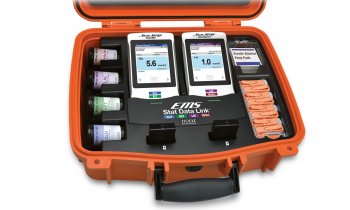Improving biochemical substances research
As November began so did the EU-OPENSCREEN project. With a €3.7 million EU subsidy, its three-year mission is to plan a European research infrastructure for screening platforms
Chemical substances can bring miracles: they kill bacteria, prevent viral multiplication or stop cancer cell growth. Thus they offer a huge reservoir of potential drugs. However, seeking substances and their biological effects is a mammoth task and cannot be undertaken alone. The Preparatory Phase Project EU-OPENSCREEN (European Infrastructure of Open Screening Platforms for Chemical Biology) was initiated to ensure that Europe’s many and varied test laboratories can profit from their respective research results in the future.

The objective is to build up an infrastructure that will make it possible to generate and collect knowledge and make it publicly accessible all across Europe.
The ambitious project, begun at the Leibniz Institute for Molecular Pharmacology (FMP) in Berlin, is part of the European Roadmap for Research Infrastructures, developed by the European Strategy Forum on Research Infrastructures States, which will be required over the next 10-20 years to ensure Europe remains competitive as a research location. In an interview with Karoline Laarmann, EU OPENSCREEN coordinator Dr Ronald Frank, of the FMP, outlined the project’s potential.
‘Research into active ingredients is an extremely broad area because the number of possible substances is almost unending, and the biological effects manifold,’ Dr Ronald Frank began. ‘No one individual laboratory can carry out in-depth research on its own. This requires coordination that facilitates the provision of the necessary technologies and collection of substances, collection of knowledge and also helps to avoid situations where several locations carry out research into the same matter. Many automated screening laboratories that test substances as to their mechanism of action at high capacity are already regionally linked. This networking is now to be extended on a European level.’
What could such an infrastructure offer?
‘An infrastructure can be compared to a service organisation. We are the facilitators who provide the high through-put equipment (screening) and the databases in the project’s laboratories. The biologists and chemists who use these screening platforms then deal with the actual issues. The platforms allow them to examine tens of thousands of substances as to their different biological effects within the space of only a few hours.
Who is involved in the initial project phase?
‘Currently, twelve countries: Germany, France, Spain, Sweden, The Czech Republic, Finland, the Netherlands, Norway, Denmark, Austria, Poland and Italy. Each nominated a national institute as a partner to represent the national platforms. Within the three years, we obviously hope to develop a model that will support many competent institutes and countries. This is why we need to negotiate with around 30 ministries to find out if there is any interest in financing certain components of this infrastructure in the long term, because the EU sponsorship will cease after the three-year planning phase.’
What does the three-year plan cover?
‘Many important issues need to be resolved so that we can work in such a complex, cross-border consortium. Initially, we need to define exactly what the planned platforms are to provide -- and what not. We also need to clarify all administrative, legal and financial prerequisites. The agenda comprises 12 work packages, including standardisation procedures and database development.
‘The database will be run by another ESFRI project -- ELIXIR. They will centrally coordinate the IT for the biological-medical infrastructure, which is constructed in such a way that it can also be networked with other biological databases.
Are there national differences in this research area?
‘Chemical biology is a comparatively recent branch of research, and has developed at a different pace in the individual EU States – depending on the research priorities in each country. For example, France and Germany have been developing networked infrastructures for research into the effects of chemical substances on biological processes for over ten years. Other countries have only just begun to plan these infrastructures nationally. A network such as the one resulting from EU-OPENSCREEN helps colleagues from the world of science to convince their ministries that sponsorship makes sense.
29.12.2010











